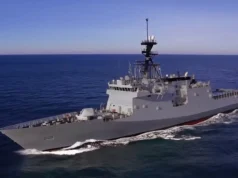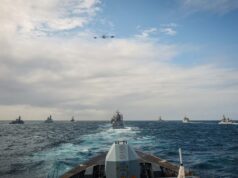A two-week mine countermeasures exercise in the Baltic Sea involving twelve ships from seven NATO nations has concluded, according to a statement released by NATO’s Maritime Command on 10 April.
The German-led drill, known as Baltic MCM, aimed to strengthen both technical capabilities in mine warfare and broader operational coordination among allied navies.
The exercise featured contributions from Standing NATO Mine Countermeasures Group One (SNMCMG1), which operated six ships while simultaneously supporting Baltic Sentry, NATO’s ongoing mission to protect critical undersea infrastructure in the region. Additional vessels operated under the German-led Commander Baltic Naval Squadron (COMBALTRON).
“This wasn’t only about mine countermeasures—it was about building a reliable, responsive team at sea,” said Commander Erik Kockx, Task Group Commander of SNMCMG1. “Exercises like Baltic MCM strengthen the operational muscle memory that lets us act fast, together, when it matters most.”
The drill included a mix of tactical and seamanship training, starting with formation navigation drills that tested communication protocols between ships from different nations. According to NATO, the crews used standardised procedures to build interoperability and ensure cohesive manoeuvring.
The exercise progressed to live-fire scenarios, including air defence drills involving a towed aerial target simulating a hostile aircraft. Kockx acknowledged the difficulty of such operations, noting: “Firing from a moving ship at a moving target is not an easy task, but our crews proved they’re more than capable.”
Crews also practised traditional naval skills, such as flag-based manoeuvring and replenishment at sea, which NATO describes as critical for extended deployments. Simulated damage control and firefighting drills further tested crews’ readiness for emergencies.
To conclude the exercise, participants conducted a traditional Sail Past, a ceremonial farewell where ships passed in close formation, exchanged salutes, and observed naval traditions, including water sprays and music.
According to NATO, the event underscored the alliance’s ability to integrate multinational maritime forces effectively and maintain readiness through shared experience and trust. The statement highlighted that, while focused on mine countermeasures, the exercise also reinforced NATO’s ability to operate jointly in a contested environment.













